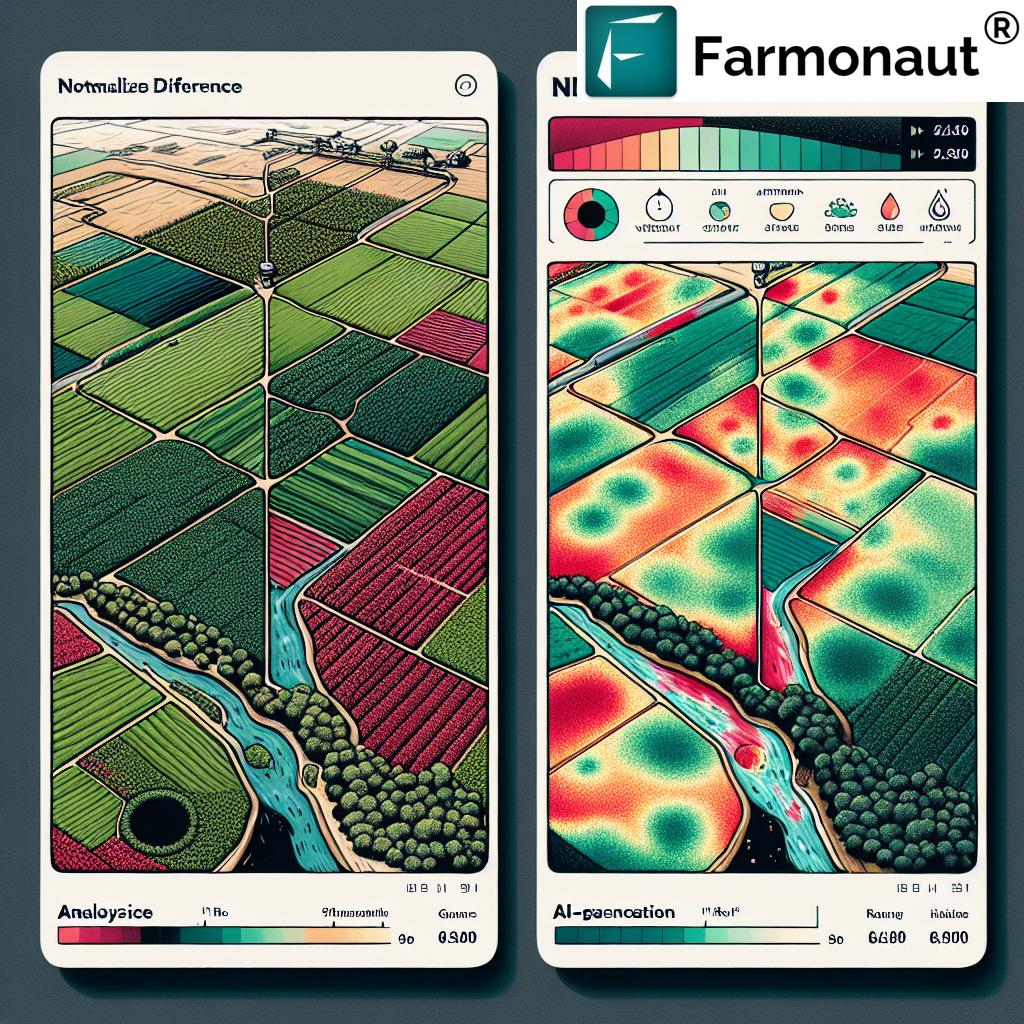Palm Oil Yield Per Acre: 7 Ways to Boost Productivity
“Optimal planting density can increase palm oil yield by up to 20% per acre using innovative spacing techniques.”
Summary: Understanding Palm Oil Yield Per Acre—Factors, Optimization, and Environmental Considerations
Palm oil yield per acre is a central metric for palm oil plantation productivity and economic returns. Derived from the Elaeis guineensis tree, palm oil features in diverse products, including food, cosmetics, and biofuels—making it one of the most versatile and in-demand vegetable oils globally. However, optimizing yields per hectare requires attention to a multitude of factors influencing palm oil production—from plantation age and density, to soil health, environmental stewardship, and the adoption of cutting-edge technological advancements in palm oil farming.
In this comprehensive guide, we’ll examine the key elements that shape oil palm productivity, strategies for improving oil palm productivity, and sustainable palm oil management practices. You’ll learn actionable steps, supported by the latest innovations, that can lead to higher palm oil yields per acre and a balanced, profitable future for the industry.
Focus Keywords integrated: Palm oil yield per acre, factors influencing palm oil production, best practices for oil palm cultivation, optimal planting density for oil palms, improving oil palm productivity, sustainable palm oil management, technological advancements in palm oil farming.
Key Factors Influencing Palm Oil Production and Productivity
Maximizing palm oil yield per acre is about more than just choosing the right tree. Numerous factors—both agronomic and technological—must be optimized for best results. Here’s an in-depth look at the most impactful variables:
-
Oil Palm Tree Age and Yield:
- The productivity of oil palms follows a distinctive pattern across their lifespan, influencing overall yields and management strategy:
- Establishment phase (Years 1-3): Minimal yield as Elaeis guineensis trees focus on root and canopy development.
- Rapid yield increase (Years 4-7): Flowering begins, and palms mature rapidly.
- Peak production (Years 8-15): Average annual FFB (Fresh Fruit Bunches) yields reach 20–30 tons per hectare.
- Gradual decline (Years 16-25): Productivity decreases due to palm age and canopy crowding.
- Replanting phase (After 25 years): Significant yield drop requires replanting for sustained productivity.
-
Planting Density and Spacing:
- Optimized density and spacing improves sunlight penetration, air circulation, and nutrient availability—fundamental for oil palm health.
- Triangular planting systems (9 x 9 x 9 meters) enable proper distribution, typically accommodating 143 palms per hectare, balancing resource use and maximizing acre yield.
-
Soil Fertility, Irrigation & Rainfall:
- Oil palms thrive in deep, well-drained, high-fertility soils, with consistent rainfall or efficient irrigation systems (such as drip or micro-sprinkler) to prevent stress during dry periods.
- Soil nutrient levels are central; measured soil management and tailored nutrient application is a must for robust growth and higher yields.
-
Efficient Fertilization and Nutrient Management:
- Regular, data-driven application of chemical and organic fertilizers, alongside incorporating organic matter, supports sustainable, long-term yield optimization.
-
Pest and Disease Management:
- Early monitoring of pest/disease outbreaks with proactive management protects palms from severe yield losses.
-
Harvesting Practices & Palm Oil Extraction Rates:
- Optimal harvesting timing and efficient fruit extraction processes preserve oil quality and boost income per acre.
-
Technological Advancements in Palm Oil Farming:
- The integration of advanced technologies—like satellite-based crop health monitoring, AI-driven analytics, high-yielding clones, and blockchain-enabled traceability—enables data-backed decision making for higher productivity and sustainability.
“Technological advancements have boosted palm oil productivity, achieving yields of over 4 tons per acre annually.”
7 Ways to Boost Palm Oil Yield Per Acre
The journey to enhanced palm oil production is centered on seven actionable methods—each contributing to significant yield and efficiency gains. Get to know these science-backed strategies designed for both smallholders and large-scale estates:
1. Optimal Planting Density for Oil Palms
- Impact: Well-calibrated density and spacing prevent competition for sunlight, nutrients, and water—key for robust fruit bunches and higher per-acre yields.
- Practice: Triangular patterns (9 x 9 x 9 meters) with ~143 plants per hectare maximize land use efficiency.
- Result: Increases yield by up to 20% per acre in well-managed plantations.
2. Selecting High-Yielding, Disease-Resistant Oil Palm Clones
- Impact: Elite palms (clones) like Eka 1 and Eka 2 (producing up to 13 tons of crude palm oil per hectare and extraction rates above 32%) outperform conventional trees, with faster maturity (24 months bearing vs. industry average of 30 months).
- Practice: Source certified, disease-resistant and region-appropriate clones from reputable nurseries to ensure genetic quality.
- Result: Achieve higher yields and improved resilience to biotic and abiotic stress factors.
3. Enhancing Soil Fertility & Implementing Precise Nutrient Management
- Impact: Healthy, well-fertilized soils enable palms to efficiently absorb water and nutrients, sustaining growth and yields.
- Practice: Regular soil testing and leaf analysis inform targeted fertilizer application (organic matter, NPK, trace elements), tailored to specific growth stages and local conditions.
- Result: Improves palm health and yield by 15–25%.
4. Irrigation Optimization & Water Management Practices
- Impact: Consistent water availability prevents yield stress, especially during dry periods.
- Practice: Implement drip and micro-sprinkler irrigation systems to optimize water delivery, minimize waste, and improve FFB development.
- Result: Can boost productivity by 15–20% per acre.
5. Integrated Pest, Disease, and Weed Management
- Impact: Reduces losses caused by pests and diseases; prevents serious outbreak-induced yield drops.
- Practice: Use regular crop health monitoring (including remote and in-field sensing tools), timely intervention, and bio-control strategies.
- Result: Sustains health and productivity, avoiding up to 30% loss in susceptible regions.
6. Efficient Harvesting Techniques & Timely Oil Palm Fruit Extraction
- Impact: Prompt harvesting at peak fruit maturity maximizes oil extraction rates and protects fruit quality for premium market value.
- Practice: Train staff on maturity indicators (color, weight, fruit detachment); invest in harvesting tools and logistics.
- Result: Increases extraction efficiency and reduces post-harvest losses.
7. Adopting Technological Advancements for Yield Optimization & Resource Efficiency
- Impact: Data-driven decision-making transforms plantation management—from satellite-based monitoring and AI advisory to blockchain-enabled traceability.
- Practice: Use advanced digital farm management platforms for real-time monitoring, predictive analytics, and automated reporting.
- Result: Streamlines operations, reduces waste, ensures compliance, and empowers smart resource allocation for sustained high yields.
Technological Advancements in Palm Oil Farming: Precision, Sustainability, and Yield Gains
The modern palm oil industry is being shaped by extraordinary technological advancements. Let’s explore how digital agriculture is revolutionizing the way plantations operate, from boosting productivity to advancing sustainability.
A. Satellite-Based Crop Health Monitoring & AI Analytics
- Companies like Farmonaut are leading the shift towards affordable, scalable large-scale farm management. Our solution uses multispectral satellite imagery to provide real-time vegetation indices (NDVI), soil moisture levels, and crop health analytics—empowering fast, informed responses to plant stress, irrigation issues, or nutrient deficiencies.
- This technology enables farmers to efficiently optimize planting density for oil palms, monitor for pest/disease outbreaks, and fine-tune input applications, ensuring high acre yields with lower environmental impact.
Learn more: Farmonaut’s satellite-based crop verification streamlines agricultural lending and insurance, reducing fraud and improving farmer access to finance and security.
B. AI-Driven Advisory and Decision Support
- Our proprietary Jeevn AI system provides personalized, real-time guidance for best practices in oil palm cultivation—from optimal fertilizer scheduling, pest management, irrigation timing, to weather alerts—maximizing the efficiency of every management intervention.
C. Blockchain-Based Traceability and Supply Chain Integrity
- Blockchain solutions—such as Farmonaut’s product traceability platform—help validate every stage of the palm oil supply chain (from plantation to processing to retail), enhancing consumer confidence and sustainable palm oil management.
D. Carbon Footprinting and Resource Management
- Real-time carbon footprint tracking enables plantation owners to monitor and minimize emissions, contributing to a balanced approach between economic gain and environmental stewardship.
E. Remote Sensing & API Integration for Scalable Solutions
- Utilize our powerful satellite & weather data API and developer documentation to seamlessly integrate advanced crop monitoring in your own apps or agribusiness management systems.
Environmental and Sustainable Palm Oil Management: Balancing Yield with Conservation
While oil palm production is among the highest-yielding of all commercial oil crops, it is not without controversy. Widespread cultivation in tropical regions has sometimes resulted in environmental issues such as deforestation, habitat loss, and carbon emissions. Here are the key considerations and recommended sustainable practices:
- Reduce Deforestation and Maintain Biodiversity: Avoid establishing plantations in primary forests or peatlands—a major carbon sink.
- Adopt Responsible Land Use and Restoration: Restore degraded lands and implement buffer zones to minimize ecosystem disruption.
- Reforestation and Agroforestry: Integrate agroforestry models and replant native trees to promote a natural balance.
- Certifications & Standards: Adhere to protocols like RSPO (Roundtable on Sustainable Palm Oil) to meet international environmental and social standards.
By implementing sustainable palm oil management strategies, plantation operators can improve efficiency and profitability while mitigating environmental impacts and fostering a positive social role for oil palm in tropical economies.
Impact of Key Productivity Factors on Palm Oil Yield (Estimated Values)
| Method | Description | Estimated Yield Increase (%) per Acre | Recommended Implementation Practice |
|---|---|---|---|
| Optimal Planting Density | Triangular system planting (9x9x9m), prevents crowding & ensures resource efficiency. | 10–20% | Maintain 143 plants per hectare with adequate row spacing and sunlight penetration. |
| Disease Management | Regular monitoring and early intervention for pests and diseases. | 10–30% | Use remote sensing, field scouting, and integrated pest management. |
| Fertilization | Targeted application of nutrients (NPK, trace elements, organic matter). | 15–25% | Conduct soil/leaf testing; use precision spreaders and monitor results. |
| High-Yield Varieties | Plant disease-resistant, fast-maturing, high-oil-content clones. | 20–40% | Obtain certified clone seedlings & follow recommended planting schedules. |
| Technological Adoption | Integrate remote sensing, AI analytics, and traceability for decision-making. | 15–30% | Adopt satellite monitoring and precision tools via platforms like Farmonaut. Large-scale farm management details |
| Sustainable Practices | Use eco-friendly cultivation, maintain soil health, and minimize waste. | 10–18% | Follow RSPO standards, carbon tracking (see carbon tools), compost use. |
| Irrigation Optimization | Efficient water management via drip/micro-sprinkler systems minimizes drought stress. | 15–20% | Install automated systems, schedule irrigation according to crop stage and rainfall patterns. |
How Farmonaut Tools Empower Oil Palm Growers for Optimal Productivity and Sustainability
As a pioneering agricultural technology company, we at Farmonaut are dedicated to making precision agriculture both affordable and accessible for farmers and estate managers—regardless of plantation size. Our integrated solutions address every stage of the palm oil production journey:
- Satellite-Based Crop and Soil Monitoring: Regularly updated, field-specific satellite imagery delivers actionable insights on vegetation health, soil moisture, and disease/pest hotspots, helping farmers react quickly and efficiently to any adverse conditions.
- Personalized AI Advisory: Our Jeevn AI system analyzes real-time and historical field data to give customized advice for oil palm fertilization techniques, irrigation scheduling, and risk mitigation—substantially reducing guesswork and yield variability.
- Blockchain Traceability: With our traceability platform, palm oil producers can create tamper-proof digital records, ensuring transparency from plantation to end-customer—a major advantage for plantations seeking to export or serve environmentally conscious markets.
- Fleet and Resource Management: Plantation operations can deploy our fleet management technology for real-time tracking and optimization of farm machinery, reducing downtime, fuel consumption, and overhead costs.
- Carbon Footprint and Sustainability Tracking: Our carbon footprinting tools help managers measure, monitor, and reduce the plantation’s environmental impact, supporting alignment with sustainability standards and global market demands.
- API and Platform Scalability: Agribusinesses and software developers can plug into our API for scalable integration with existing apps or business platforms, multiplying the power of our precision agriculture toolkit.
- Crop Loan and Insurance Facilitation: Satellite data verification allows transparent crop reports for easier access to agricultural loans and insurance claims.
Get started with Farmonaut—on web app, Android, or iOS.
Frequently Asked Questions (FAQ): Palm Oil Yield, Efficiency, and Sustainable Management
1. What is the average palm oil yield per acre?
The average palm oil yield per acre (equivalent to approximately 2.47 tons per hectare) ranges from 3 to 4 tons of crude palm oil (CPO) annually during peak production (years 8–15 of palm age), depending on clone selection, management, and environmental conditions. Well-managed, high-tech plantations can exceed this average with yields reaching up to 5 tons per acre.
2. How does optimal planting density for oil palms improve yield?
Optimal planting density ensures each palm has enough access to sunlight, nutrients, and water, avoiding overcrowding and competition that can reduce productivity. Triangular systems (9x9x9 meters, ~143 palms per hectare) are industry standard for best results.
3. Why is the age of the oil palm tree so important?
Palm oil productivity is closely tied to the palm tree’s age. Young palms (<3 years) are establishing themselves with low yield, while mature palms (years 8–15) reach their production peak—after which gradual decline sets in, highlighting the importance of timely replanting.
4. Can technological advancements really affect palm oil yield?
Yes, the integration of tools like satellite crop health monitoring, AI-driven management, and blockchain record-keeping leads to higher accuracy in resource allocation and timely actions, which dramatically enhances yield per acre and reduces waste/losses.
5. What are the main environmental considerations in palm oil cultivation?
Major environmental concerns include deforestation, greenhouse gas emissions from peatland clearance, and biodiversity loss. Adopting sustainable practices—responsible land use, reforestation, certified management, and carbon tracking—protects ecosystems while maintaining economic viability.
6. How do oil palm fertilization techniques impact productivity?
Targeted oil palm fertilization techniques—combining regular soil/leaf analysis, precise nutrient application, and organic matter enrichment—bolster soil fertility and palm health, resulting in higher, more consistent yields per acre.
7. How can Farmonaut’s apps and API help palm oil farmers?
We at Farmonaut provide game-changing tech for monitoring, resource management, and sustainability tracking. Farmers and estate managers can use these insights to optimize operations, minimize input costs, and maximize both economic and environmental outcomes. Explore our large scale farm management tools and API documentation for more.
Conclusion: Achieving Sustainable, High-Yield Palm Oil Production at Scale
Mastering palm oil yield per acre is a science—requiring attention to fundamental factors influencing palm oil production, proactive adoption of the best oil palm cultivation practices, and a commitment to sustainable palm oil management. By embracing a data-driven, technology-enhanced approach—selecting high-yielding clones, applying efficient planting, soil nutrition, and irrigation, and harnessing satellite analytics—producers can unlock the full potential of their plantations, paving the way for resilient, profitable, and environmentally balanced palm oil production.
Empower your farm or estate with Farmonaut’s advanced precision agriculture portfolio—from crop monitoring to resource optimization and transparency. Join the future of high-efficiency, sustainable palm oil cultivation—today.
















